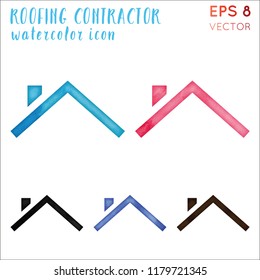Get Your Wall Surfaces Ready For Painting By Adhering To Necessary Ideas And Strategies That Make Certain A Perfect Finish-- Reveal The Important Actions To Enhance Your Job
Get Your Wall Surfaces Ready For Painting By Adhering To Necessary Ideas And Strategies That Make Certain A Perfect Finish-- Reveal The Important Actions To Enhance Your Job
Blog Article
Uploaded By-Grace Lindberg
When you're prepping your wall surfaces for paint, it's important to follow a systematic process to guarantee a flawless surface. Start by examining the wall for any type of damages; this action can make or damage your job. As soon as arrow head 've determined any kind of issues, cleaning the surface effectively is vital, as a dirty wall surface can influence paint attachment. Afterwards, you'll need to spot any type of blemishes and apply a guide. But there specify methods and pointers that can boost your prep work game-- let's discover those more to achieve the best results.
Assessing Wall Surface Problem
Prior to you get your paintbrush, take a moment to assess your walls' problem. Look for any kind of noticeable damages like cracks, holes, or peeling paint. These imperfections can affect just how the paint sticks and looks once it's dry. If you discover any kind of substantial damages, you'll need to focus on repair services prior to diving into painting.
Look carefully at the structure of your walls. Is the surface area smooth, or is there appearance that might require unique consideration? Smooth walls usually need much less preparation, while distinctive surface areas might require even more time to paint uniformly.
Additionally, think about mouse click the next web page . If the old paint is glossy, it mightn't permit new paint to stick appropriately. You'll need to know if your wall surfaces have actually been repainted with oil-based or water-based paint, as this can affect your choice of primer or paint.
Finally, take note of any type of wetness problems. If you see signs of water damages or mold and mildew, address these issues instantly to avoid further problems.
Cleansing the Surface
Once you have actually evaluated the problem of your wall surfaces, the following step is cleaning up the surface. Beginning by collecting your products: a pail, cozy water, a light detergent, a sponge or towel, and a scrub brush for harder places.
Begin on top corner of the wall surface and function your method down. Mix the cleaning agent with warm water in your container, then dip the sponge or fabric into the service. Wring it out to prevent too much dampness on the wall surfaces.
As you clean up, pay close attention to locations that could've collected dust, oil, or finger prints. For stubborn discolorations, use the scrub brush delicately to avoid harming the paint beneath. Wash your sponge or cloth regularly in tidy water to prevent spreading out dust around.
After cleaning, it's important to clean the wall surfaces with a damp towel to get rid of any kind of soap residue. This step makes certain a smooth surface area for the brand-new paint to adhere to.
Allow the walls to completely dry completely before moving on to the following prep work actions. This thorough cleaning procedure will help develop a fresh canvas for your painting task, guaranteeing the very best results.
Patching and Priming
Patching and priming are important action in preparing your walls for a fresh coat of paint. Initially, examine your walls for any holes, splits, or blemishes. Use a premium spackling substance or patching paste to fill these areas.
Use the substance with a putty blade, smoothing it out so it's flush with the surrounding surface. Allow it to completely dry completely, and afterwards sand it lightly until it's smooth and also.
When you've covered whatever, it's time to prime. Guide assists seal the patched locations, making sure the paint adheres correctly and supplies an uniform surface. Select a primer suitable for your wall surface kind and the paint you'll be utilizing.
Apply the primer utilizing a roller for larger locations and a brush for corners and edges. If your patched areas are significantly huge or porous, you may wish to apply a 2nd layer of primer after the first one dries out.
After priming, let whatever completely dry completely prior to proceeding to paint. This prep work will not just improve the look of your wall surfaces yet also extend the life of your paint task.
Take your time, and you'll be pleased with the results.
Conclusion
By adhering to these basic steps, you can achieve a smooth and expert finish on your wall surfaces. Start by examining their problem, then tidy and patch any flaws before using primer. Keep in mind to enable ample drying out time and ensure every little thing is smooth before you dive into paint. With the right preparation, you'll establish the stage for an attractive change in your area. Currently, collect your products, inhale the fresh air, and prepare yourself to paint!
